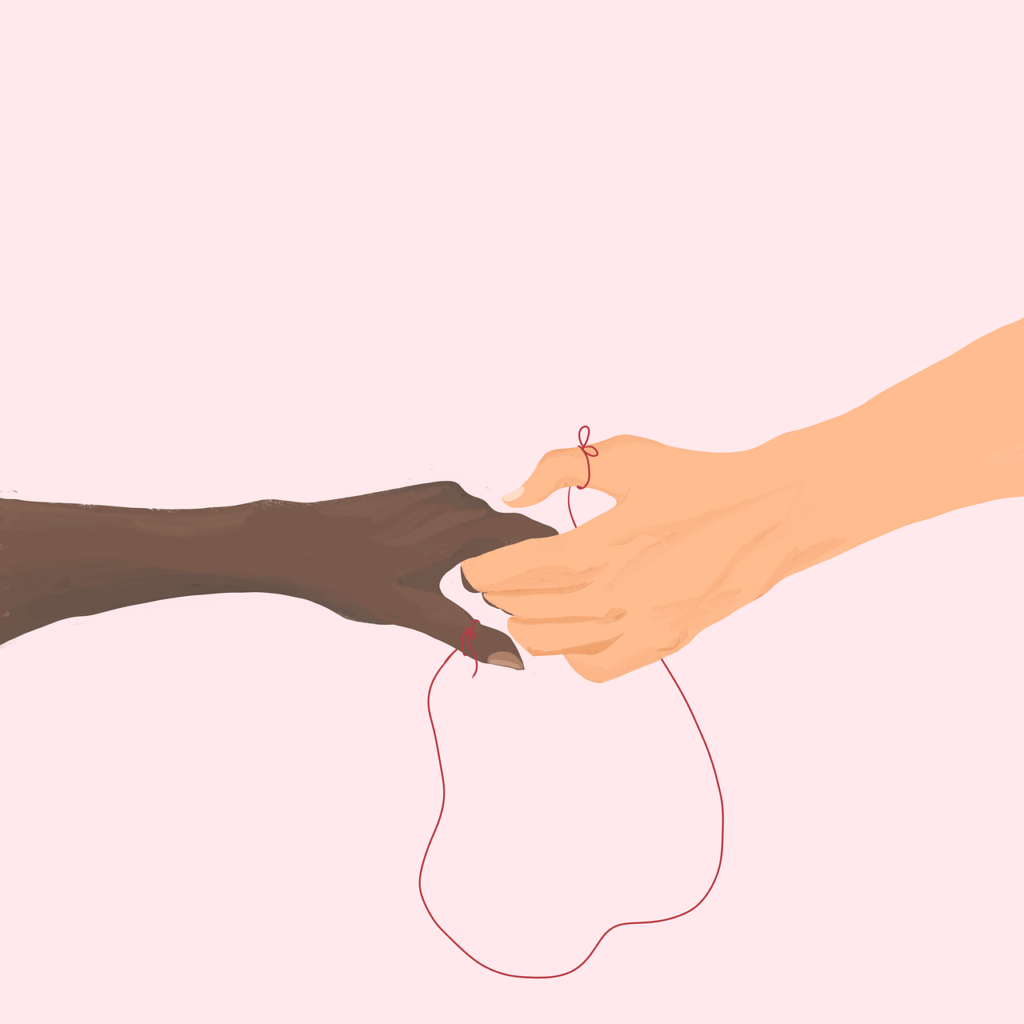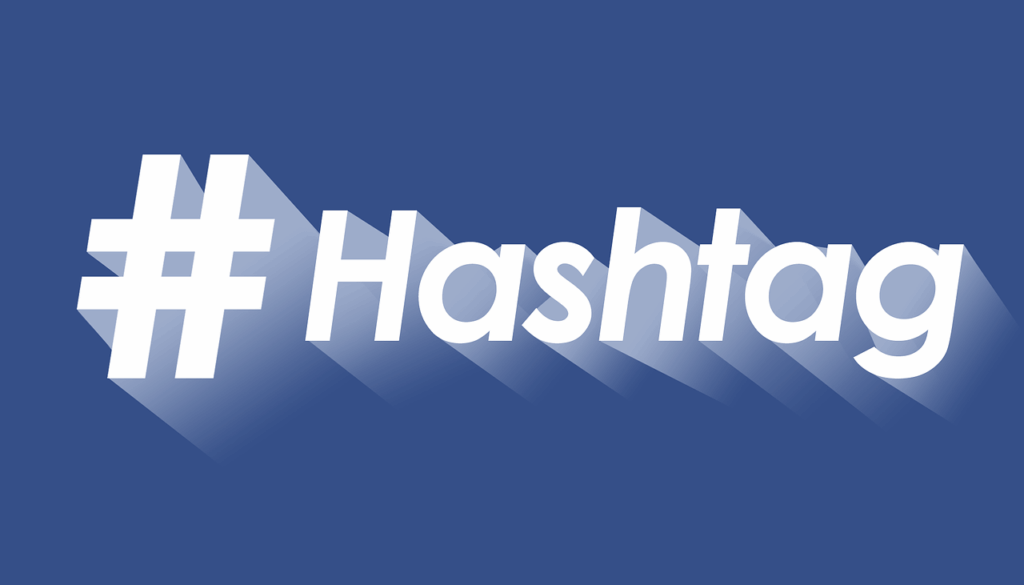
Alright, let’s be real for a sec. We all love social media, right? It’s that brilliant modern platform that keeps us connected to friends, family, and even those random acquaintances from high school you haven’t seen in ages. It’s a goldmine for learning, sharing, and, let’s be honest, a good scroll session at the end of a long day. But here’s the kicker: sometimes, that scroll can turn into a cringe-fest, thanks to some pretty grating posting habits.
We’ve all been there – mindlessly flicking through our feeds when suddenly, a post pops up that makes us audibly groan, or maybe even reach for the ‘unfollow’ button. It’s not about being a hater; it’s about wanting our digital spaces to be enjoyable, engaging, and, well, less annoying. From the constant stream of selfies to the head-scratching cryptic updates, these habits are not just minor irritations; they can genuinely detract from the positive experience social media is supposed to offer.
So, if you’ve ever wondered why your friends might be muting your stories or giving your posts a wide berth, this one’s for you. We’re diving deep into some of the most common social media faux pas, shining a light on those habits that drive us all a little bit crazy. Could you be the one doing them? Let’s unmask these digital dilemmas and figure out how we can all be better, more considerate online citizens. Get ready to rethink your feed!
1. **Excessive Selfies and Image Overload**Sure, we all love a good selfie! It’s fun to capture a moment, show off a new look, or simply celebrate feeling good. But let’s talk about those accounts where it feels like a new selfie drops every single hour. It quickly shifts from being a fun update to an overwhelming, constant stream that can monopolize everyone’s news feed, no matter how lovely your face might be. This kind of endless self-portraiture can get incredibly tiresome for your followers, overshadowing any other content you might want to share.
It’s not just about the sheer quantity; it’s also about the context. Think about the ‘gym selfies’ – while it’s great to be proud of your fitness journey, a close-up of every workout angle, meal, drink, or even your smartwatch step count can become too much. The intention might be to inspire, but for many, it comes across as showing off rather than genuinely motivating. Similarly, those ‘vacation thirst traps,’ often sexy or flirty bikini shots from the beach, might seem like a way to garner attention, but survey participants actually found these images to have the opposite effect, proving that less can definitely be more.
Overdoing it with self-focused images can unfortunately project an image of self-obsession rather than simply sharing special moments. While it’s natural to want to show your best angles, when your entire feed becomes a gallery of you, people start to wonder if there’s anything else going on in your life. It’s important to remember that social media is a platform for diverse content, and a constant focus on oneself can make your profile less engaging and relatable for a broader audience, pushing people to scroll past or even unfollow.
Striking a balance is key here. Share your triumphs, your good hair days, and your proud moments, but mix it up with other aspects of your life. Show us your hobbies, your thoughts, or the world around you. This way, your selfies become highlights rather than repetitive content, keeping your audience engaged and ensuring your posts genuinely resonate without causing eye-rolls or the dreaded ‘mute’ button to be pressed. A varied feed is a vibrant feed, and your followers will thank you for it.
2. **Vague, Cryptic Posts**Ah, the classic ‘I can’t believe this happened’ or ‘You know what you did’ post – without a single detail. We’ve all seen them, and let’s be honest, they’re perplexing. This habit, often dubbed ‘vaguebooking,’ leaves everyone guessing and, more often than not, can be genuinely worrying for your friends and family. It creates an atmosphere of mystery that, while perhaps intended to pique interest, usually just causes frustration and sometimes even unnecessary anxiety among your network.
These cryptic updates scream for attention, and not in a good way. The lack of specific information forces your followers to speculate, leading to a barrage of concerned comments or private messages asking, ‘What happened?’ While it might feel like you’re creating intrigue, the reality is that you’re just making people work too hard to understand what’s going on. It can even lead to uncomfortable situations where friends might mistakenly believe the post is about them, causing undue stress or misunderstanding within your social circle.
The underlying desire behind vague posts is often to elicit responses and engagement, but it frequently backfires. Instead of genuine connection, it can foster irritation. If you have significant news to share, whether it’s good or bad, the most effective way to share it is to be clear and direct. Your friends and followers will appreciate the clarity and will be better able to offer support or celebration when they understand the situation.
Consider whether the information is truly meant for a public audience. Some things are simply better saved for private conversations with close friends or family. If you’re not ready to disclose the full story, then perhaps it’s best not to post about it at all. Choosing to share consciously means providing enough context to be understood, or choosing discretion when the details are too sensitive or simply not meant for a wider, speculative audience. Don’t leave your audience hanging – either share meaningfully or hold off until you’re ready.
Read more about: Some Analytical Insights into Ukraine’s Evolving Air Strategy: Precision Strikes, Tactical Revelations, and Geopolitical Shifts
3. **Irrelevant or Excessive Tagging**Picture this: you’re scrolling, and suddenly, you’re tagged in a post. You click, curious, only to find it’s a promotional ad for a product you don’t care about, or a group photo of people you don’t know, and you’re one of 50 irrelevant tags. Sound familiar? Tagging numerous people in a post that has no genuine relevance to them is a sure-fire way to clog up notifications and become pretty irritating for everyone involved. It feels spammy, intrusive, and shows a lack of consideration for your friends’ digital space.
This habit becomes particularly annoying when it’s used for business-related plugs or general outreach. While social media is a powerful tool for promotion, blanket tagging is not the way to build genuine connections or generate interest. It’s surely better to ask permission if you plan to tag people frequently, especially if the content is commercial or not directly related to a shared experience. Respecting people’s notifications and their privacy is paramount in fostering positive online relationships.
A specific variant of this is the “random giveaway tag.” Getting tagged in contests or giveaways by people you barely know, purely to boost their chances or spread the word without your consent, is incredibly annoying and intrusive. This kind of behavior can easily lead to you being blocked or unfriended, as it’s seen as a direct violation of personal boundaries. It’s a quick route to losing followers rather than gaining engagement.
To avoid this digital faux pas, always ensure your tags are relevant to the content you’re sharing. If it’s a photo with friends, tag the friends present. If it’s a discussion, tag those directly involved or those who would genuinely benefit from seeing it. This targeted approach prevents unnecessary alerts, reduces the likelihood of people deleting your tags, and ensures that your social media interactions remain meaningful and appreciated. Think quality over quantity when it comes to tagging.

4. **Constant Negativity and Political Rants**We all have bad days; life happens, and sometimes we need to vent. Social media can even be a space for sharing frustrations and seeking support. However, there’s a distinct difference between occasionally letting off steam and turning your entire social media presence into a perpetual venting ground for every minor inconvenience. This habit can quickly become a significant downer for your friends and followers, creating a perpetually negative vibe that’s hard to be around.
One of the most polarizing aspects of this habit is the political rant. Being passionate about politics is absolutely fine, and having informed opinions is a hallmark of engaged citizenship. But constantly talking about politics, especially through aggressive or uncompromising rants, can alienate friends and spark unnecessary arguments. The problem often isn’t the political view itself, but the unwillingness to consider other perspectives or engage respectfully. Social media feeds can quickly become battlegrounds, leaving many users feeling exhausted and choosing to disengage.
This also ties into the habit of “always complaining on Twitter” or “turning everything into a debate.” Some individuals seem to approach every topic with a combative spirit, ready to argue and find fault. Not everything needs to be a deep discussion or a heated debate. This relentless negativity and argumentative style can make your feed a draining place to be, causing friends to mute your updates or even block you entirely to preserve their own peace of mind. It’s a fast track to becoming that person everyone tries to avoid online.
To counteract this, strive for balance. While it’s okay to share your struggles or strong opinions occasionally, try to intersperse them with positive posts, uplifting stories, or even just lighthearted content. Share your views respectfully, be open to different perspectives, and know when to step away from a heated discussion. Keeping the vibe upbeat overall ensures that your social media presence remains enjoyable and engaging for your network, making them more likely to listen when you do have something important to say.

5. **Airing Personal Drama and Relationship Overshares**Social media has blurred many lines, and one area where this is particularly evident is the sharing of personal life details. While there’s no definitive right or wrong in how much to share, airing every detail of your personal drama – from the latest breakup to ongoing family feuds – can be incredibly uncomfortable for your audience. It’s a bit like being trapped in a room with two people having a loud argument; you just don’t know where to look or what to say. Some things are simply too intimate or sensitive for public consumption.
This extends significantly into relationship territory. Constantly showcasing your relationship with a barrage of posts, comments, and likes might seem like ‘relationship goals’ to some, but research indicates a deeper, often less positive, issue. Studies suggest that couples frequently doing this might be seeking to “secure” their bond amidst potential threats, a behavior often driven by insecurity. This relentless public display, or “gushing about new relationships,” can quickly become tiresome for others who don’t need a blow-by-blow account of your romantic life.
Perhaps one of the most eye-roll-inducing habits in this category is “constantly changing your relationship status.” We’ve all seen ‘that’ person: ‘In A Relationship’ on Monday, ‘Single’ on Wednesday, and back to ‘In A Relationship’ by Friday. While your relationship status is, of course, your business, using social media to broadcast every shift in your romantic life often comes across as attention-seeking rather than genuine life updates. It puts your private life on a public stage where it’s not always welcome or appreciated.
Ultimately, some things are better kept private or discussed with close friends offline. While social media allows for quick updates about our lives, there’s a delicate line between casual sharing and oversharing. Choose what you share with intention, considering how it might make your audience feel. Your friends care about you, but they don’t necessarily need to be privy to every intimate detail or dramatic turn of events in your personal and romantic life. Maintain a healthy boundary for a more harmonious online experience.
6. **Spreading Misinformation and Clickbait**In an age where information travels at lightning speed, the habit of sharing misleading headlines or clickbait links just to get clicks is not only frustrating for your friends but also actively contributes to the spread of misinformation. These types of posts often promise sensational revelations but deliver little to no substance, leaving your audience feeling duped and annoyed. It’s a quick way to lose trust and credibility with your followers, and if you keep doing it, you might find yourself ‘blacklisted’ from their feeds.
Beyond mere annoyance, the practice of “spreading false info” has far more serious implications. Sharing unverified news, conspiracy theories, or factually incorrect statements can harm people and communities. In today’s digital landscape, the responsibility of a social media user extends to verifying the information they share. Blindly reposting something without checking its credibility is a disservice to your audience and can have real-world negative consequences, contributing to a less informed and more polarized online environment.
The allure of clickbait and viral content is strong, but the integrity of your online presence hinges on the quality and truthfulness of what you share. When you share something that turns out to be false or intentionally misleading, it diminishes your reputation as a reliable source of information. Your followers will start to question the validity of all your posts, leading to disengagement and a lack of trust. It’s not a good thing to do, and it’s something people are increasingly aware of and quick to call out.
To combat this, always, always fact-check before you share something. A quick search can often reveal the veracity of a headline or story. When sharing articles, especially from less familiar sources, take a moment to read beyond the headline and assess the content. Additionally, if you’re sharing an external link, offering a brief, honest explanation of why you’re sharing it and what it’s about can help build trust. It isn’t difficult to be a responsible sharer, and it makes a world of difference for everyone online.
Alright, so we’ve already unmasked some seriously cringey social media habits that can turn our delightful feeds into dreaded no-go zones. But wait, there’s more! The digital world is vast, and unfortunately, so are the ways we can inadvertently annoy our friends and followers. If you’ve scrolled this far, you’re probably already a pretty self-aware online citizen, but let’s dive deeper and shine a light on six more behaviors that might just be making your audience silently hit that ‘mute’ button.
It’s all about making our shared online spaces enjoyable for everyone, right? Nobody wants to be *that* person whose posts induce an audible sigh. So, buckle up as we explore the next batch of digital dilemmas, from hashtag mayhem to vacation humble-brags. Let’s decode these digital faux pas and make our online interactions a whole lot smoother, funnier, and genuinely more engaging!

7. **Excessive Hashtags**We get it, #hashtags are a thing. They’re supposed to help people discover your amazing content, right? You want to maximize your reach, get those eyeballs on your brilliant thoughts or stunning photos. But let’s be real, when your post looks like a string of #every #single #word #is #a #hashtag, it quickly becomes an unreadable mess that makes our eyes glaze over faster than you can say #toomanyhashtags.
The intention might be good – trying to optimize visibility – but the execution often backfires spectacularly. Instead of making your content more accessible, you’re making it a chore to read. It’s like someone screaming into a megaphone at a library; you might get attention, but probably not the kind you want. Your followers aren’t trying to decipher a secret code to understand your update; they just want to scroll effortlessly.
Think of hashtags like spices in a delicious dish. A pinch here and there enhances the flavor, but an entire jar? That’s just overwhelming. A few relevant hashtags are perfectly fine and genuinely helpful for discoverability. You don’t need to put on a hashtag show. Maybe try adding them at the very end of your post, or even in the first comment, to keep your main message clean and digestible.
The goal is to keep your posts clean and engaging, allowing your message to shine without getting lost in a sea of pound signs. Your audience will thank you for the clarity, and you’ll likely find that a more thoughtful, targeted approach to hashtags leads to better engagement anyway. So, next time, pause and ask yourself: Is this #really #necessary, or am I just creating #digitalclutter?
Read more about: The Digital Hypnosis: How Social Media Algorithms Are Secretly Rewiring Your Brain for Compulsive Consumption

8. **Incessant Event Invites**Social media is a godsend for connecting people, and yes, it’s super handy for getting the word out about your awesome event, whether it’s a birthday bash, a charity run, or a “launch party” for your new line of scented candles. But there’s a fine line between informing your network and relentlessly spamming their notifications with event invites they have absolutely zero interest in.
We’ve all been there: a flurry of notifications for events happening three states away, or for a product launch that’s completely unrelated to our interests. It feels impersonal, like a digital flyer shoved in your face without consent. Sending multiple invites to people without even bothering to check if they’re remotely interested is not just annoying; it can make people actively resent your digital presence.
This constant barraging often leads to event fatigue. Your friends start ignoring all invites, even the ones they might genuinely care about, because they’re tired of sifting through the noise. It’s the digital equivalent of that one friend who keeps adding you to random group chats without asking – you just want to silence them.
Instead, let’s practice some invite etiquette, shall we? Consider sending personalized invites to those who might genuinely be interested. Respect the RSVP; if someone says no, don’t keep harassing them. They’ll be in touch if they change their mind or if their interest piques. A thoughtful, targeted approach builds genuine connections and ensures your events get attention from the right people, rather than just generating mass irritation.
Read more about: Beyond the Dashboard: 14 Engine-Killing Habits You Need to Ditch Now for a Longer Car Life
9. **Ceaseless Bragging**Oh, social media, the ultimate highlight reel! It’s where we share our proudest moments, our latest adventures, and yes, sometimes our shiny new possessions. There’s nothing wrong with celebrating success or a new purchase, but some users take it to an entirely different level, constantly boasting about their achievements, their lavish lifestyles, or their latest material acquisitions. It’s like watching an endless montage of “look at me!” moments.
While you might think you’re inspiring awe, often it just comes across as arrogant, even a bit self-absorbed. Constantly acting like you’re a celebrity with the world at your feet can make others feel inadequate or, worse, just plain annoyed. Studies even suggest that this constant self-promotion and showcasing of material possessions can stem from an underlying insecurity, a need for external validation to boost self-esteem.
Then there’s the art of the “humblebrag,” which is perhaps the most irritating form of boasting. You know the one: “Ugh, I had to hire a housekeeper because my new house is just too big for me to take care of alone.” It’s a backdoor brag, pretending to complain or be modest while subtly flaunting something impressive. And let’s not forget the ever-popular “talking ad nauseam about how busy you are” – as if your packed schedule is a badge of honor everyone needs to hear about.
A little sharing is great, but remember to strike a balance. Celebrate your successes, absolutely, but also take the time to celebrate others’ achievements. Engage in genuine conversations rather than just using your feed as a platform for self-aggrandizement. Your friends want to see you happy and thriving, but they also appreciate authenticity and humility. You don’t need to prove your worth with every single post; your genuine connections will always value you for more than your latest status symbol.
Read more about: The 200 MPH Club: Unveiling the Apex Predators of Asphalt and Salt

10. **Overuse of Filters**Filters, glorious filters! They can add a touch of magic to our photos, enhance colors, smooth out imperfections, and even turn us into adorable puppies or mischievous elves. When they first popped up, they were a fun, playful way to express creativity. But like all good things, overuse can turn them into a serious eye-roll inducer. If we’ve seen one picture of you with dog ears, trust us, we’ve seen 100.
The problem isn’t the existence of filters; it’s the relentless reliance on them to the point where images become unrealistic and your actual face is a rare sight. We’re talking about the permanent hazy shade, the perpetually oversized pout, or the uncanny valley effect where your features are so smoothed and exaggerated, you barely look like yourself. It just makes your photos look… well, filtered.
This constant digital alteration often chips away at authenticity. While it’s natural to want to present your best self, when every single photo is heavily filtered, it starts to feel a bit disingenuous. It can even create unrealistic expectations for others and for yourself. What happened to just a good old-fashioned photo that actually looks like you?
Be brave enough to embrace a natural look sometimes! Filters are tools, not necessities. Use them sparingly, creatively, and with purpose, rather than as a crutch. Your followers will appreciate seeing the real you, in all your genuine glory. Relatability and authenticity go a long way in fostering genuine connection online, far more than the perfect, yet artificial, filtered aesthetic.
Read more about: Why Your Dating App Profile Is Getting Zero Matches: A Lifehacker’s Guide to Boosting Your Success

11. **Fitness Overkill**Hooray for your fitness journey! Seriously, embracing a new regime, hitting the gym, and working on your health is fantastic. We genuinely applaud your dedication. However, there’s a point where sharing your every single workout detail, meal prep, and step count crosses from inspiring into the dreaded territory of “fitness overkill.” And trust us, that line is probably much closer than you think.
We’re talking about the close-up of every workout angle, the precise breakdown of every meal and drink you consume, and the daily, incessant close-ups of your smartwatch displaying your step count. We get it. You’re working hard, you’re tracking progress, and you’re proud. But for your followers, it can feel like a relentless barrage of information they didn’t ask for and, frankly, probably don’t need.
The intention might be to motivate and inspire, and for some, it might just do that. But for many, it becomes repetitive and, dare we say, a bit self-congratulatory. It shifts from sharing a journey to monopolizing the feed with what feels like a constant declaration of “look how healthy I am!” People understand you’re working on your health – you don’t need to provide a live-streamed, minute-by-minute account.
The key here, as with many things on social media, is moderation. Share your fitness journey, by all means, but perhaps focus on highlights, milestones, or genuinely useful tips, rather than an exhaustive daily log. Mix it up with other aspects of your life. This way, you inspire without overwhelming your audience, keeping them engaged and genuinely interested in your progress, rather than making them scroll past in exasperation. Bravo for your health, now let’s keep the sharing balanced!

12. **Holiday Spam**Ah, vacation! The sun, the sand, the adventures… and the inevitable onslaught of “holiday spam” from our well-traveled friends. We all love a good getaway, and it’s wonderful to share those special moments. But there’s a distinct difference between sharing highlights from your trip and posting every single moment, turning your followers’ feeds into a live, minute-by-minute travelogue of your entire vacation.
From the notorious “vacation countdowns” (54% of survey respondents find these incredibly uninteresting) to the endless parade of “throwback posts” from trips long past (53% find these just as annoying), holiday spam can quickly become insufferable. It’s particularly grating when you consider that a significant portion of Americans (one in four!) aren’t planning a vacation this year, and a hefty 53% admit that vacation posts often just make them feel jealous.
This kind of relentless posting often comes across as smug, especially to those stuck at work or facing their own life challenges. It’s no wonder that many people get fed up; one in five Americans will unfollow or mute someone who posts too many vacation photos, and nearly half (49%) are likely to unfollow if you’re posting daily. It’s the digital equivalent of someone constantly showing you their holiday slides for hours on end.
So, how can you share your amazing adventures without becoming *that* person? Focus on highlights! Share a curated selection of your best photos or most memorable moments. Better yet, offer genuinely useful content like recommendations for cool spots (70% like this!) or even mistakes to avoid (44% appreciate this advice). Or, if you truly want to share every detail, consider creating a shared album for close friends and family, rather than a public broadcast. That way, you get to fully enjoy your holiday without spending the entire time documenting it for a possibly unenthusiastic online audience.
So, there you have it – another six social media habits that can quickly turn your online presence from delightful to dreaded. From the overzealous hashtagging to the incessant vacation updates, these behaviors, while often well-intentioned, can inadvertently alienate your followers and detract from the positive experience social media is supposed to offer.
Read more about: Seriously, Where Did They Go? 12 Iconic American Foods That Vanished From Our Tables (And Why!)
The digital world is a fantastic place for connection, sharing, and even a bit of showing off, but it thrives on consideration and balance. By being mindful of how our posts land with others, we can all contribute to a more enjoyable, less annoying online environment. After all, your online presence is an extension of you, and who wants to be known as the person who constantly clogs up everyone’s feed? Let’s aim for genuine engagement, thoughtful sharing, and maybe, just maybe, a little less digital noise. Your friends (and their scroll-fatigued thumbs) will thank you for it!








